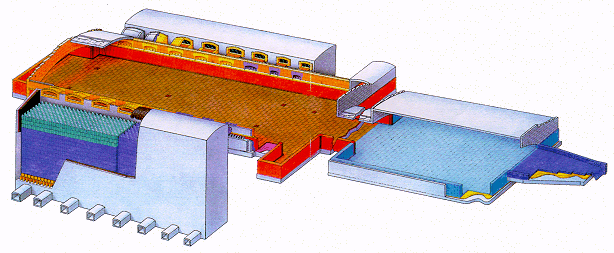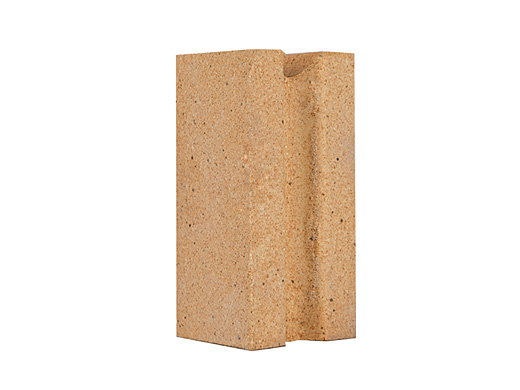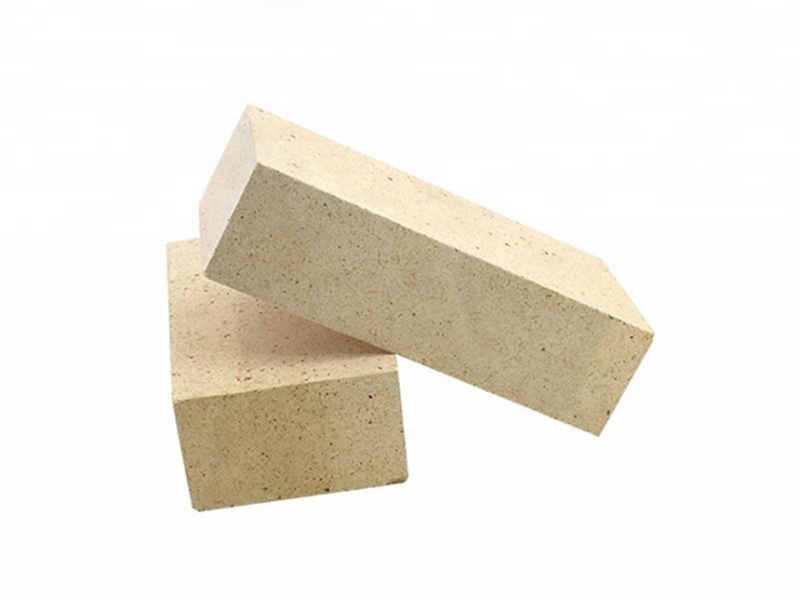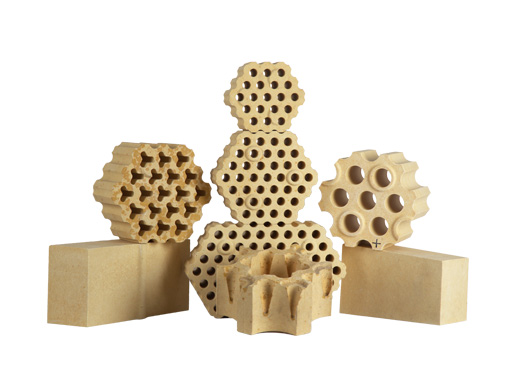News detail
Common sintered refractory materials in glass kilns
Refractory materials play a key role in the construction and operation of glass kilns. In addition to fused cast refractory materials, sintered refractory materials also occupy an important position in glass kilns with their unique properties and advantages. They provide strong support for the stable operation of glass kilns, and continue to innovate and progress with the development of the glass industry.

Characteristics of sintered refractory materials
Production process characteristics: Sintered refractory materials are made by sintering raw materials at high temperatures after batching, mixing, and molding. This production method allows the particles inside the material to be closely combined through processes such as solid-phase reaction and recrystallization to form a stable organizational structure. Compared with the high-temperature melting molding of fused cast refractory materials, the sintering process is relatively simple and the cost can be controlled to a certain extent.
Performance advantages: It has good volume stability and is not prone to significant volume changes in high temperature environments, which is crucial to maintaining the integrity of the internal structure of the glass kiln. Its thermal shock stability is also relatively good, and it can withstand rapid changes in temperature without problems such as cracking or peeling. In addition, sintered refractory materials also have a certain ability to resist erosion and can resist chemical erosion and mechanical scouring in glass kilns.
Common types of sintered refractory materials
Clay refractory materials: This is a more traditional and widely used sintered refractory material. The main component is clay, which contains a certain amount of alumina and silica. It has a certain refractoriness, generally between 1580℃ – 1770℃, which can meet the use requirements of some medium and low temperature glass kilns. Clay refractory materials are relatively cheap, rich in resources, and have good thermal shock stability. They are often used in flues, regenerators and other parts of glass kilns.

High-alumina refractory materials: Made of raw materials with a high alumina content, they can be divided into different grades according to the alumina content. Its refractoriness is usually above 1770℃, with superior high-temperature performance and stronger erosion resistance than clay refractory materials. High-alumina refractory materials are widely used in high-temperature areas of glass kilns, such as kiln roofs, craters and other parts, and can withstand high temperatures and erosion by glass liquid.

Silica refractory: The main component is silicon dioxide, which has a high load softening temperature and can maintain good structural strength at high temperatures. Silica refractory has low thermal conductivity and can play a certain role in heat insulation. In glass kilns, it is often used in the upper structure of glass melting furnaces, such as the arch and other parts, which can effectively resist the erosion of high-temperature flames.

Application in glass kilns
Application of kiln top: High-alumina and siliceous sintered refractory materials are often used in the kiln top of glass kilns. The kiln top needs to withstand the radiation and erosion of high-temperature flames, while maintaining good sealing. The high-temperature strength and erosion resistance of high-alumina refractory materials can meet this requirement; the high load softening temperature and low thermal conductivity of siliceous refractory materials also make it a good choice for kiln top materials, which helps to reduce heat loss and improve the thermal efficiency of the kiln.
Application of regenerator: Clay and high-alumina sintered refractory materials are widely used in the regenerator of glass kilns. The function of the regenerator is to recover heat from high-temperature flue gas and preheat the combustion air. Clay refractory materials have good thermal shock stability and can adapt to the environment of frequent temperature changes in the regenerator; high-alumina refractory materials play an important role in the key parts of the regenerator due to their high refractoriness and corrosion resistance, extending the service life of the regenerator.
Flue application: The flue of the glass kiln is mainly used to discharge exhaust gas, and the working temperature is relatively low. Clay refractory materials have become a common material for flue parts due to their cost advantages and certain performance characteristics, and can effectively resist the erosion of dust and corrosive gases in the exhaust gas.
Comparison with fused-cast refractory materials
Performance difference: fused-cast refractory materials usually have higher density and better resistance to glass liquid erosion, and perform well in key parts of glass kilns, such as pool walls, flow holes and other places that directly contact glass liquid. Sintered refractory materials have certain advantages in thermal shock stability and volume stability, and are more suitable for use in parts with large temperature changes or high volume stability requirements.
Cost: Generally speaking, the production cost of sintered refractory materials is relatively low, especially clay refractory materials, which are more affordable. Cast refractory materials have a complex production process, high energy consumption and relatively high cost. This makes sintered refractory materials more competitive in some cost-sensitive glass kiln parts.
Development Trend
Performance improvement: As the glass industry continues to increase its requirements for kiln performance, sintered refractory materials are also developing towards high performance. R&D personnel have improved the refractoriness, corrosion resistance and thermal shock stability of materials by optimizing raw material formulas and improving sintering processes to meet the increasingly demanding use conditions of glass kilns.
Environmental protection and energy saving: With increasingly stringent environmental protection requirements today, the production of sintered refractory materials also pays more attention to energy conservation and emission reduction. Use new environmentally friendly raw materials to reduce pollutant emissions in the production process; at the same time, develop energy-saving sintering technology to reduce energy consumption and achieve sustainable development.
Composite and functionalization: In order to further improve the performance of sintered refractory materials, composite and functionalization have become development trends. By compounding materials with different properties, composite materials with a variety of excellent properties can be prepared; or special functions such as self-repairing function and antibacterial function are given to sintered refractory materials to expand their application areas.
In short, sintered refractory materials have a wide range of applications and an important position in glass kilns. With the continuous advancement of technology, they will continue to improve and develop, contributing more to the efficient and green development of the glass industry.


Send inquiry
Please Leave your message you want to know! We will respond to your inquiry within 24 hours!